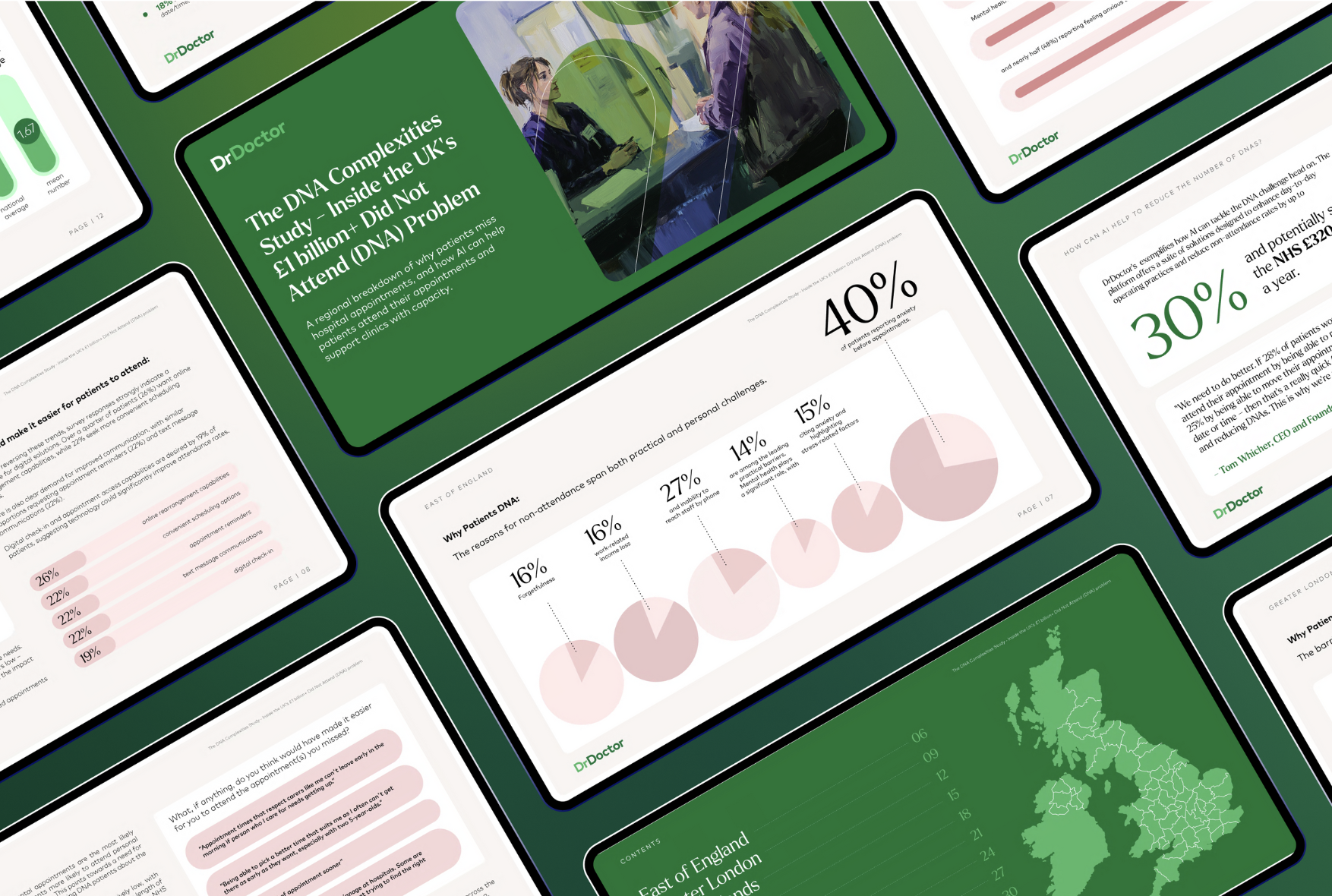Everyone is talking about the waiting list, which currently sits at over 7.6 million people.
The NHS are making meaningful strides towards tackling the backlog. NHSE deployed new Elective Recovery initiatives like eMeet & Greet. Our new government have outlined plans to expand appointment capacity – something we recently explored in our sustainable approach for Elective Recovery.
But it’s time we look at the problem through a different lens.
A critical factor often overlooked is the issue of Did Not Attends (DNAs). In 2021/20222, the DNA rate for all NHS outpatient appointments was 7.6%. This equates to approximately 7.83 million DNAs out of 103 million outpatient appointments booked.
To date, there’s been little shift in this trend.
Last year, over 7 million scheduled NHS appointments were missed. Not only does this compound the waiting list problem but costs the NHS an estimated £1.6 billion each year - enough to pay the annual salary of 40,000 nurses.
By reframing our approach to combat the challenge of DNAs, we could help free up the much-needed capacity in the system, releasing pressure on the waiting lists. Trusts that manage their waiting lists more effectively could reduce DNAs by almost 33%, which means an additional 2.3 million appointments could be attended each year.
But first, let's take a step back.
It's easy to view DNAs as mere numbers and statistics. The reality is far more complex and very human. Behind each DNA is a person - each with a unique set of circumstances, challenges and justifiable reasons around why they fail to make their appointment.
Patients are lost in the system - what if we could find them? What if we could better understand the reasons why people DNA, and proactively intervene before they happen?
We asked 5,000+ patients who missed an NHS appointment what got in the way - and what would help them attend in the future (the full regional breakdown).
Why do people DNA?
Determining why people fail to attend their appointments is often quite complex. While there's no short answer, there is a route to finding one: listening to the patient.
It comes as no surprise when a night-shift worker fails to make their appointment at midday, yet continue to receive appointment slots they can't change. That same worker may be more inclined to attend if they were given a late-afternoon slot instead.
This critical information is too often invisible to healthcare providers.
Why can we easily cancel or change our fast-food delivery, but struggle to rebook something as important as a hospital appointment?
There’s been little research that dives into the root causes of a no-show, but the limited data available reveals a multifaceted problem with deeply human elements. One study suggests that forgetfulness accounts for about 40% of DNAs, but this merely scratches the surface.
Many people just like the night-shift worker face circumstances beyond their control, such as work constraints, transportation difficulties, or caregiving and dependent responsibilities. For example, almost 20% of patients report difficulty taking time off work as a reason for missing an appointment.
Demographic, health and socioeconomic barriers also play a significant role. Those in rural areas, with limited mobility or battling mental illnesses can make it especially challenging to leave home.
Communication breakdowns, from unclear appointment information to lack of reminders, account for another substantial portion of DNAs. Importantly, patients have reported that previous poor experiences with healthcare appointments make them more likely to miss future ones.
This complex interplay of personal, social, and systemic factors underpins the need for a more nuanced, data-led approach to understanding and resolving the DNA problem - one that recognises the wider influences behind each missed appointment.
AI to better understand people – not just data
AI is often seen as cold and mechanical. This can breed skepticism and concern around its role in healthcare, which will forever demand a personal, human touch.
There will always be factors out of our control. Life’s unpredictability means AI is far from the ‘silver-bullet’ solution to entirely resolving the problem of DNAs – but it can lead a transformation in the way we approach and manage DNAs.
When better utilised and understood, AI can leverage demographic, geographic and socioeconomic factors to accurately predict the likelihood of a patient attending their appointment. This can help the NHS transition from a one-size-fits all approach to a data-driven, proactive management of DNAs and capacity planning.
Instead of just processing numbers, these predictive AI insights can help shape a better understanding of the people behind each appointment, and complex factors behind why people fail to attend - beyond that they simply forget.
Reshaping our approach to DNAs
While traditional forms of digital technology can support combating the problem of DNAs - such as SMS reminders and appointment management tools – one of the key areas AI is helping Trusts is predicting DNAs before then happen.
This approach has three key steps:
Identify: By analysing a range of these factors and real-time patient behaviours patterns, AI identifies which patients or appointment times are more prone to no-shows. For example, older patients may be less likely to attend early morning appointments, while younger working professionals may prefer these time slots.
Intervene: Supported with these actionable, predictive insights, teams can proactively engage with patients at higher risk of missing their appointments, reducing the likelihood of a DNA. Personalised smart reminders, direct messages, and automated calls are automatically triggered to engage these high-risk patients. Patients who fail to respond are flagged and added to prioritised calling lists for manual follow-up, ensuring patients never slip through the cracks.
Optimise: AI leverages real-time data and insights to forecast demand better and make more informed, data-driven decisions when planning capacity. Trusts can safely overbook clinic slots and dynamically adjust schedules, accounting for behaviour patterns or cancellations to ensure capacity is always optimised.
Bridging the Gap with AI
Let's stop and think for a moment about a different NHS.
We know that it's significantly cheaper to prevent a disease than to cure one. By embracing AI with open arms, we could use capacity from reducing missed appointments to deliver more proactive, preventative care. We could swap the chaos of last-minute disruption for data-driven, personalised treatment.
Solving non-attendance is the first step, and AI is staking its claim as the missing piece to the puzzle. By predicting DNAs before they happen, we can help patients progress through the system, alleviate the strain on the backlog and unlock extra capacity to reallocate towards helping those in need.
Let’s help build an NHS that works smarter, not harder.
Keen to learn more?
Discover how our purpose-built Smart Centre can predict and reduce DNAs, dynamically manage clinic capacity and drive all-round productivity at your NHS Trust.

